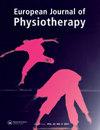Patient perspectives on digital health and physical activity in Parkinson’ disease: a brief research report
IF 1.1
Q3 REHABILITATION
引用次数: 0
Abstract
AbstractBackground People living with Parkinson’s disease (PwP) typically have lower levels of physical activity (PA) which predisposes them to heart disease, reduced bone density and low exercise tolerance. Digital health has been shown to be effective at promoting PA in several clinical cohorts and monitoring PA in PwP. In addition, PwP have reported positive experiences with using digital health modalities such as smartwatches and telehealth. However, the perspectives of PwP on how best to use digital health to promote PA has yet to be investigated. The aim of this study was to investigate current levels of digital skills in PwP and the perspectives and opinions of PwP on the use of digital health for PA interventions.Methods Eighty-nine PwP living in Ireland completed a cross-sectional questionnaire looking at current levels of PA and self-reported levels of digital skills.Results The majority of participants believed that PA was beneficial for PwP and had a moderate to high level of digital skills. Important factors to consider when constructing a digital health PA intervention included ease of access, low cost, variety of exercises and physical activity options and a feedback function.Conclusion PwP have a moderate to high level of self-reported digital skills. This study provides useful information on factors that should be considered when constructing a digital PA intervention for PwPKeywords: Physical activityParkinson’s diseasetechnologydigital health Disclosure statementNo potential conflict of interest was reported by the author(s).Additional informationFundingThis work was unfunded.帕金森病患者对数字健康和身体活动的看法:一份简短的研究报告
摘要帕金森病(PwP)患者通常具有较低的身体活动水平(PA),这使他们易患心脏病、骨密度降低和运动耐受性低。数字健康已被证明在几个临床队列中促进PA和监测PwP中的PA是有效的。此外,PwP报告了在使用智能手表和远程保健等数字健康模式方面的积极经验。然而,PwP关于如何最好地利用数字健康促进PA的观点尚未得到调查。本研究的目的是调查PwP中数字技能的当前水平,以及PwP对使用数字健康进行PA干预的观点和意见。方法89名生活在爱尔兰的PwP完成了一份横断面调查问卷,调查当前PA水平和自我报告的数字技能水平。结果大多数参与者认为PA对PwP有益,并具有中高水平的数字技能。构建数字健康PA干预时需要考虑的重要因素包括易于获取、低成本、多种锻炼和体育活动选择以及反馈功能。结论PwP患者自述数字技能水平中高。本研究为构建数字PA干预pwp时应考虑的因素提供了有用的信息关键词:体育活动帕金森病技术数字健康披露声明作者未报告潜在的利益冲突。本工作未获资助。
本文章由计算机程序翻译,如有差异,请以英文原文为准。
求助全文
约1分钟内获得全文
求助全文

 求助内容:
求助内容: 应助结果提醒方式:
应助结果提醒方式:


